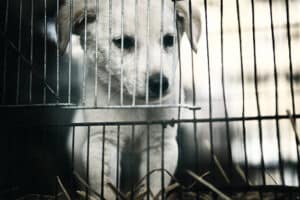A course that teaches new trackers how to read their dogs, who already know what to do, is an essential tool in the fight against poaching.
African tales abound of legendary trackers who performed almost mythical feats. With Africa’s vast tracts of bush and desert, trackers are still a potent force today.
However, with the addition of modern tracking dogs bred specially for the purpose, the two make a formidable team in anti-poaching efforts for the South African National Parks Ranger Corporation.
There are currently 54 working dogs based at Kruger National Park’s dog unit trained in tracking firearms and animal products such as pangolin scales, ivory, and rhino horn, says Pretoriuskop section ranger Craig Williams.
The Dobermanns and bloodhounds are cold-scent dogs and are doing very well, Williams says.
Prospective handlers underwent a six-week course and – with the dog already instinctively knowing what to do – it was training the ranger to read the dog that took priority.
Being a tracker and handler of the dog Scent, Ranger K spoke to The Citizen. He may not be identified for security reasons.
“Sometimes it’s not a perfect science. The spoor may be old or had a herd of animals cross it, which is when the handler must take over,” he says.
“If the track is very grassy, I look at the trail. Normally when poachers are walking, they might be three or four and they leave a big trail if they walk in a single file.”
Ranger K says animals pick their feet up compared to humans, who swing their feet forward, often kicking rocks over, kicking sticks out the way or breaking branches on the ground.
“When a poacher has walked for about 30km, he gets tired. His legs start dragging and we can see the marks in the sand or where he has gone through grass.”
Snapped branches leaking fluid, or where fleeing suspects have urinated (warmth and the appearance or lack of foam) are just some clues to direction, speed, and number of suspects.
Poachers also employ anti-tracking, such as wearing socks over their shoes, to cover the tread of their footwear.
Which is where Scent the bloodhound cross comes in.
“First, we must bond with the dog, and then I have to learn its body language.
“For instance, if we’re walking spoor and it’s very hot, she will leave the spoor and find shade. Then I know she needs water,” Ranger K says.
It’s a symbiotic relationship that can only be experienced by the closeness between the handler and his dog, and the stronger the bond, the better the teamwork.






